So you want to implement the Montessori Method in your home, but don't know where to start? In this article, I'm going to show you how to set up your home the Montessori way.
This is something my wife and I have recently done for our now 17-month-old daughter. And after going through the process ourselves, I feel like I’ve got some good advice to share!
Let’s dive in…
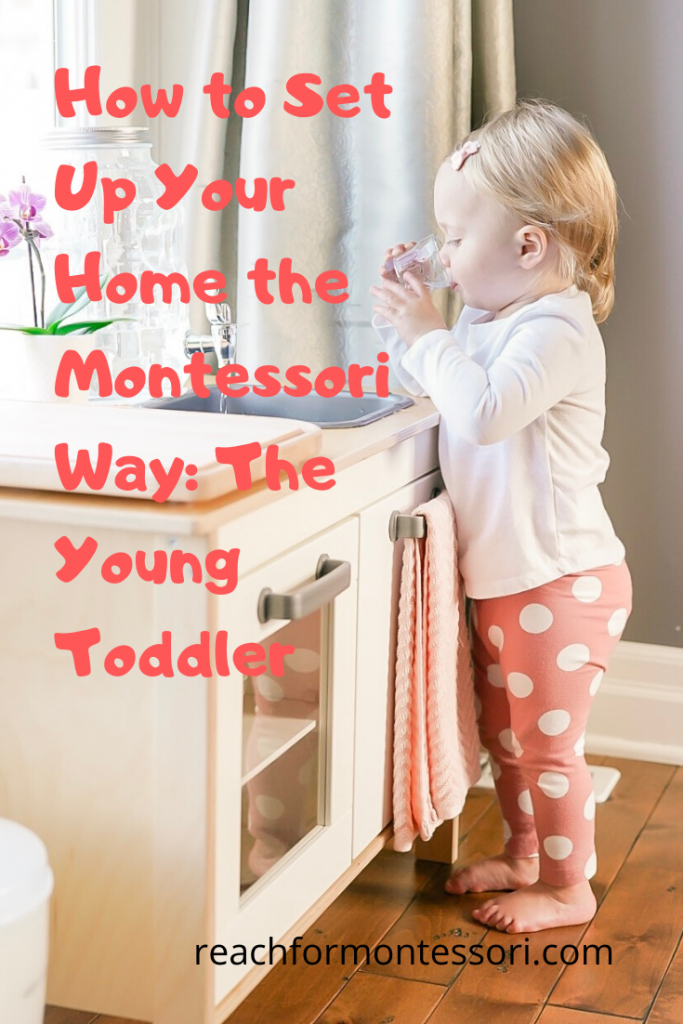
Purging Your Non Montessori-aligned Toys
The Montessori approach is very simple and minimalistic. The idea is only to offer your child a limited number of age-appropriate toys to play with at a time.
Something my wife and I did when first starting out our parenting journey was left out pretty much every toy we had for our daughter so that she had options to choose from.
This was a mistake, as instead of concentrating on mastering toys and activities, she would bounce around from activity to activity without actually learning how to use and master each one properly.
Take a look at your home from your child’s point of view and see what you can do to make things more accessible for him/her!
Setting out a limited number of toys and activities for your little one will help promote concentration and allow them to develop the skills to master those activities.
There is no exact number of toys that you should have set out if you’re following the Montessori Method, but I’ve heard a lot of parents and teachers suggest around 8 activities in a playroom is plenty.
So what do you do with all of your other toys and activities?
Well, the first thing to do is to sell or give away any toy that you don’t think you will be using anymore now or in the future.
Personally, we ended up getting rid of all battery-operated toys that were designed more for entertaining and distracting a child (compared to other toys that served a learning purpose).
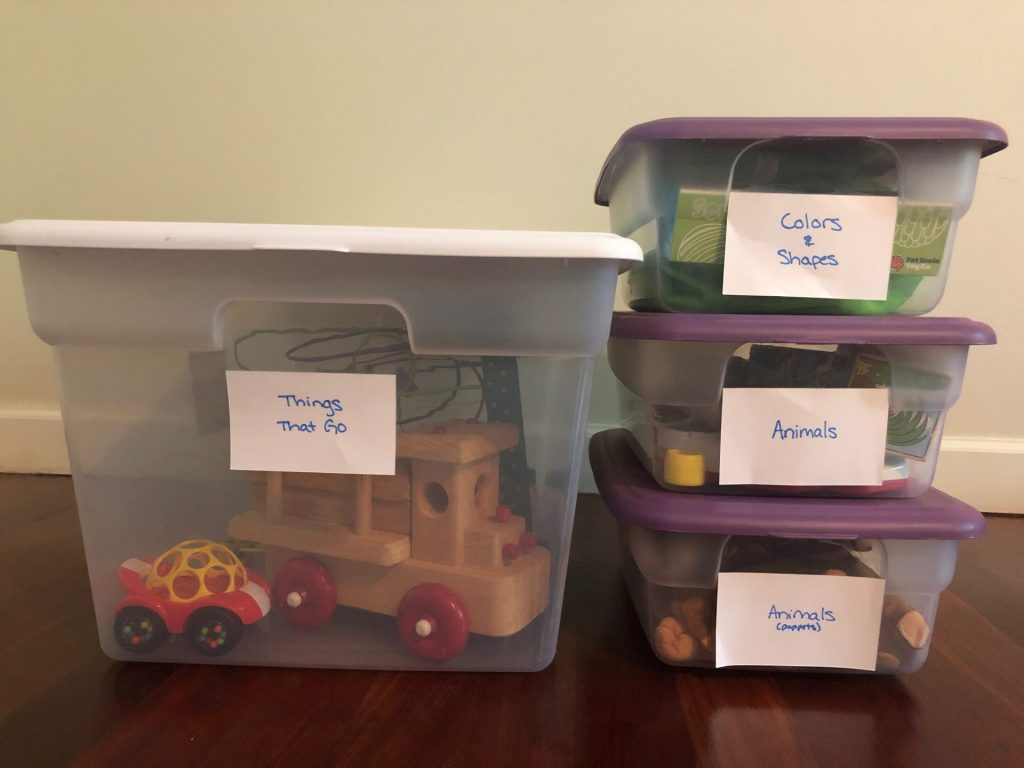
Because we wanted to have more kids after our first, we started storing the toys and activities that our daughter grew out of.
I recommend taking a look at the toys and activities you have out every month to see if there are any activities that you can store or give away.
If you have lots of age-appropriate toys, your next step is to set up a separate area or bin for the activities that will allow you to rotate your toys.
Setting out a limited number of toys and activities for your little one will help promote concentration and allow them to develop the skills to master those activities.
We set out about 8 activities each week, and rotate out the few that she doesn’t seem very interested in at the moment every Monday morning for some new activities.
A big part of Montessori is observing the child, and this helps for knowing which toys to rotate out. We keep the activities or toys in that she is engaging with, and rotate out the few that she isn’t (and try again with those in a week or two).
Child-Friendly Montessori home and kitchen
Your next step as a Montessori-minded parent is to set up your home in a child-friendly way.
Houses were built for adults, and nearly everything is out of reach for children!
The Montessori Method is big on teaching practical life (helping with cleaning, preparing food, doing things around the house, learning to dress, etc) and in order to help with that, we need to find ways to set things up at the child’s height.
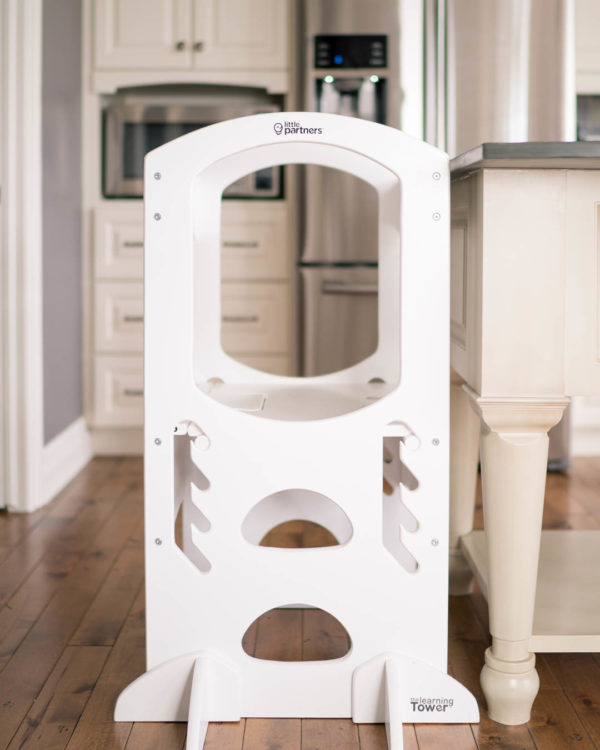
The best investment we made to make our kitchen more toddler-friendly was to invest in a Learning Tower – which is a stool for kids that allows them to be at counter height.
This allowed our daughter to first watch us prepare meals, wash dishes, etc. And then, eventually, she started to help us prepare food.
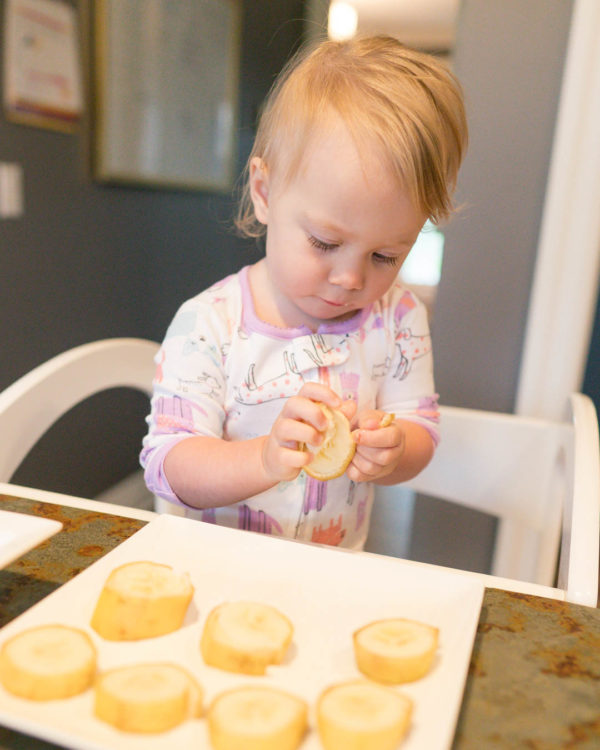
Another great investment for our kitchen was a Toddler Kitchen.
We turned an IKEA play kitchen into a functional kitchen that has helped our daughter learn how to get her own drinking water, wash her hands, and get dishes and cutlery out for meals.
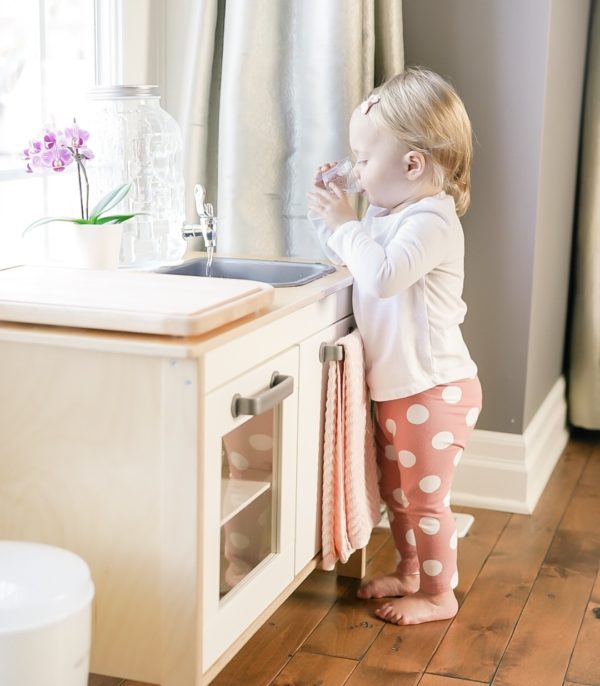
If you don’t have a toddler-size kitchen, you can always just store your child’s dishes and cutlery at their height in cupboards so that they can access them.
There are lots of ways to make your home more child-friendly in other parts of the house as well.
For example, we have set up an area near the front door to help our daughter be more independent getting ready before leaving the house.
We have a small stool set up with her shoes or boots put out beside it, and little hooks hung up at her height for hanging her jacket.
Now instead of having to hang her coat up at the adult hooks ourselves, she can have the independence of doing it herself.
Home Montessori playroom setup
In my opinion, nothing is better than a clean Montessori Playroom.
Montessori playrooms are designed to promote engagement with activities that serve a purpose to help children learn and master skills.
The big difference with a Montessori playroom compared to a regular playroom that you might find in someone’s house who hasn’t heard of the Montessori Method is that the activities are displayed nicely at child height.
Instead of being hidden in a toy bin, the toys are often displayed on an open shelf.
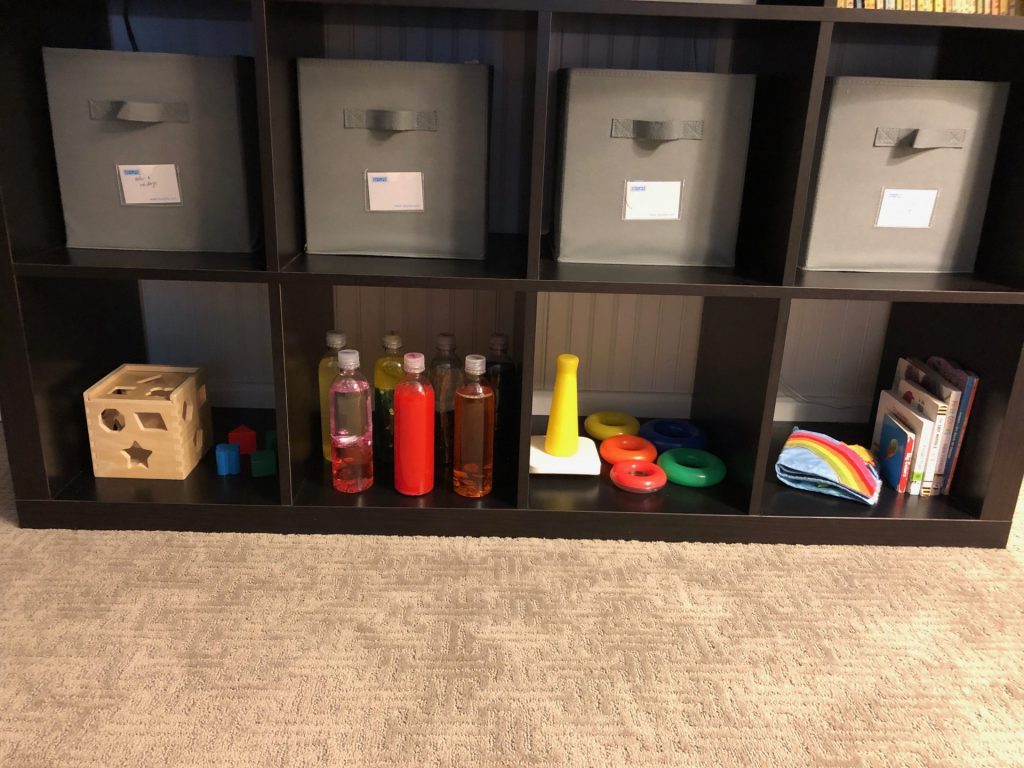
It’s also recommended that the toy be left “undone” (for example, if it’s a stacking toy you can leave all of the pieces in a tray beside the stacker). This makes it more intriguing for the child to engage with the activity.
If possible, it’s best to have activities with many pieces set out on some type of tray, which makes it easier for the child to take it out to use and put it away when done.
One last tip for your Montessori playroom is to hang up some artwork at the child’s height. This is something we didn’t do right away, but now our daughter loves looking at the artwork we have hung up at her level.
The big difference with a Montessori playroom compared to a regular playroom that you might find in someone’s house who hasn’t heard of the Montessori Method is that the activities are displayed nicely at child height.
Montessori home set up recap
Nothing is really set in stone with the Montessori at home approach. Still, I hope this post gave you a bit of an idea of where to start when turning your home into a Montessori home!
The main idea is that you have a home that promotes independence and growth in your child.
Take a look at your home from your child’s point of view and see what you can do to make things more accessible for him/her!
I hope you enjoyed this post!
This post is written by montessorimethod.com.
